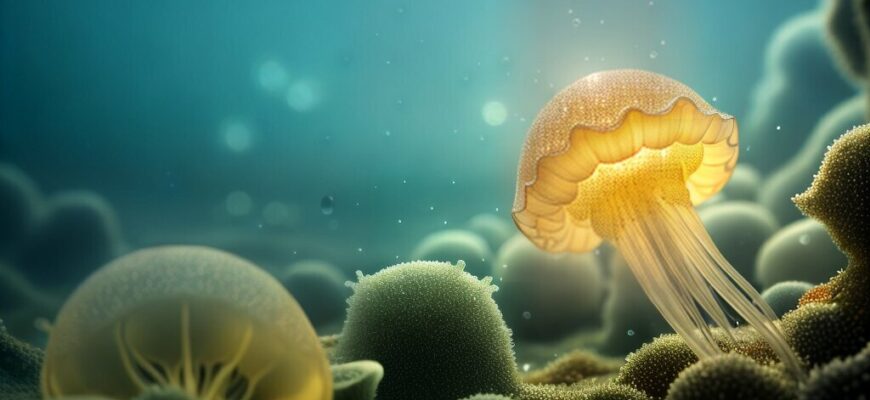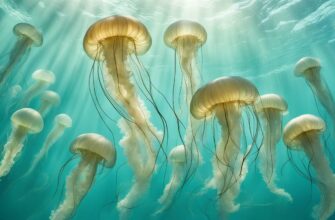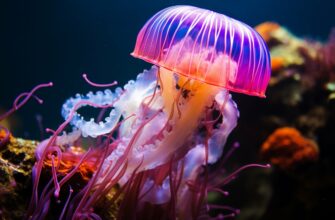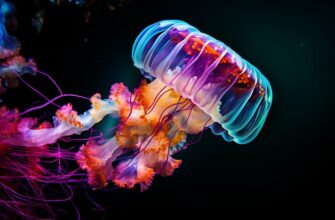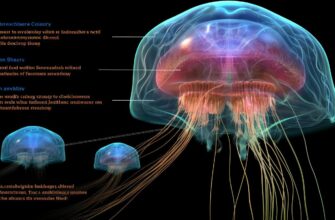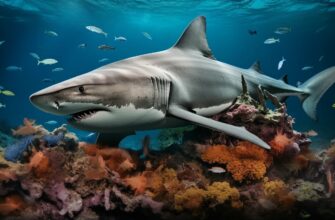Have you ever wondered how jellyfish poop? It may not be the most pleasant topic, but understanding the waste elimination process of these fascinating creatures can provide valuable insights into their biology and behavior.
Despite their simple appearance, jellyfish have a surprisingly complex digestive system that allows them to capture and ingest prey. However, the process of waste elimination is not as straightforward as it may seem, and there are several myths and misconceptions surrounding jellyfish poop.
In this article, we will explore the anatomy and functioning of the jellyfish digestive system, as well as the different methods employed by jellyfish to eliminate waste from their bodies. We will also debunk common myths and provide interesting facts about jellyfish poop that you may not have known before.
- Key Takeaways
- The Digestive System of Jellyfish
- The Digestive System of Jellyfish
- Waste Elimination in Jellyfish
- Debunking Common Myths About Jellyfish Poop
- Interesting Facts About Jellyfish Poop
- Conclusion
- FAQ
- Q: What is the purpose of this article?
- Q: Why is it important to understand how jellyfish poop?
- Q: What are some common myths about jellyfish poop?
- Q: How do jellyfish eliminate waste from their bodies?
- Q: What interesting facts are there about jellyfish poop?
Key Takeaways
- Understanding the process of jellyfish poop can provide valuable insights into their biology and behavior.
- Jellyfish have a complex digestive system that allows them to capture and ingest prey.
- There are several myths and misconceptions surrounding jellyfish poop that we will debunk in this article.
The Digestive System of Jellyfish
Understanding how jellyfish poop requires first exploring their digestive system. Unlike humans, jellyfish do not have a separate digestive tract; instead, they have a digestive cavity that acts as both the stomach and intestine.
When a jellyfish detects food, it uses its tentacles to capture and ingest it. The food is then transported to the digestive cavity where enzymes break it down into smaller particles.
The broken-down particles are then absorbed by the jellyfish’s body for energy and growth. Any waste material left over is eliminated from the body through various methods, as outlined in the next section.
The Digestive System of Jellyfish
To better understand how the digestive system of jellyfish works, imagine a bag with a single opening. This is what a jellyfish’s body is like, with the opening acting as both the mouth and anus.
Once the jellyfish ingests its food, it goes into the digestive cavity where it is broken down and absorbed. The inner layer of the digestive cavity, known as the gastrodermis, secretes enzymes to aid in digestion.
Once the food is broken down, the nutrients are absorbed through the gastrodermis and dispersed throughout the jellyfish’s body. Any indigestible material is expelled through the opening.
It’s important to note that jellyfish do not have a true circulatory system, so nutrients are distributed through diffusion rather than through a network of blood vessels.
As seen in the image, jellyfish have a simple digestive system with a single opening serving as both the entrance and exit of food. This structure allows for efficient digestion and waste removal.
Waste Elimination in Jellyfish
While the digestive system of jellyfish may seem simple, their waste elimination process is anything but. Unlike humans, jellyfish do not have a dedicated anus or rectum to expel waste. Instead, they rely on a variety of methods to eliminate waste from their bodies.
One method jellyfish use to excrete waste is through their mouths. After digesting their food, the leftovers are expelled out of the mouth as faecal pellets. Jellyfish may also eliminate waste through their tentacles, which can release mucus containing undigested food and other waste products.
Another method jellyfish use to eliminate waste is by simply shedding damaged or unusable body parts, such as tentacles, through a process known as autotomy. The discarded fragments of the jellyfish body may contain undigested food and other waste products.
Interestingly, some species of juvenile jellyfish have been observed to ingest their own faecal pellets, which contain unabsorbed nutrients, in order to obtain further nourishment. This unique method of waste recycling demonstrates the importance of efficient resource utilization in the ocean ecosystem.
Debunking Common Myths About Jellyfish Poop
Jellyfish are mysterious creatures, and there are many common myths surrounding their digestive system and waste elimination process. Let’s explore some of these myths and get to the facts.
- Myth: Jellyfish don’t poop.
- Myth: Jellyfish poop is toxic.
- Myth: Jellyfish feces is harmful to the environment.
This is a common misconception. Just like any other living organism, jellyfish need to eliminate waste from their bodies. Jellyfish excrete waste through their mouths or tentacles in the form of feces.
While it’s true that some species of jellyfish can be poisonous, their waste is not toxic. Jellyfish feces are composed of undigested food particles and water.
There is no evidence to suggest that jellyfish feces is detrimental to the environment. In fact, it can be beneficial as it provides nutrients for other marine organisms.
Now that we’ve cleared up these common myths, let’s focus on the facts surrounding jellyfish waste.
“Jellyfish excrete waste through their mouths or tentacles in the form of feces.”
The composition of jellyfish feces can vary depending on their diet and species. Typically, it consists of undigested food particles and water. Jellyfish waste is not toxic and is not harmful to the environment.
Understanding how jellyfish poop can provide valuable insight into their biology and ecology. It is an essential process that helps maintain a healthy balance in the marine ecosystem.
Interesting Facts About Jellyfish Poop
Jellyfish may not be the most glamorous creatures in the ocean, but their poop is nothing short of fascinating. Here are some interesting facts about jellyfish waste:
- Jellyfish poop is called “fecal pellets.” These are small balls of waste that are expelled from the jellyfish’s body. While other animals’ waste is typically mixed with water and diffused, jellyfish fecal pellets are solid and don’t dissipate as easily.
- Some species of jellyfish consume their own fecal pellets. This may seem gross, but it’s an efficient way for the jellyfish to extract any nutrients it may have missed the first time around.
- Jellyfish poop plays an essential role in the ocean’s ecosystem. Fecal pellets are a crucial source of nutrition for many marine organisms, including bacteria, plankton, and other small animals. These creatures break down the pellets and recycle the nutrients back into the ocean food web.
- Jellyfish poop can reveal information about the ocean environment. Scientists can study the composition and distribution of jellyfish fecal pellets to gain insights into the state of the ecosystem. For example, changes in the size or frequency of pellets could indicate shifts in the abundance of jellyfish or other organisms in the area.
So there you have it- jellyfish poop may not be the most glamorous topic, but it’s certainly intriguing. Next time you see a jellyfish, take a moment to appreciate the important role its waste plays in the ocean ecosystem.
Conclusion
Now that we have uncovered the truth about jellyfish poop, it is clear that there are many misconceptions surrounding this process. We have learned that jellyfish have a unique digestive system that allows them to break down food efficiently and eliminate waste in various ways.
By debunking common myths about jellyfish poop and sharing interesting facts, we hope to have shed some light on this fascinating topic. Understanding jellyfish poop is essential for marine biologists and environmentalists who work to protect and conserve marine ecosystems.
Overall, it is clear that jellyfish poop is more than just a waste product; it is a complex process that plays a crucial role in the survival of these fascinating creatures.
FAQ
Q: What is the purpose of this article?
A: This article aims to provide information on how jellyfish poop, debunk common myths, and share interesting facts about this fascinating process.
Q: Why is it important to understand how jellyfish poop?
A: Understanding how jellyfish eliminate waste from their bodies helps us comprehend their overall biology and ecosystem function.
Q: What are some common myths about jellyfish poop?
A: Some common myths include jellyfish excreting diamonds, jellyfish not needing to poop, and jellyfish poop being harmful to humans.
Q: How do jellyfish eliminate waste from their bodies?
A: Jellyfish can excrete waste through their mouths or tentacles, depending on their species and size.
Q: What interesting facts are there about jellyfish poop?
A: Jellyfish poop is often referred to as “jelly-poop” and can be used by other marine organisms as a food source.

